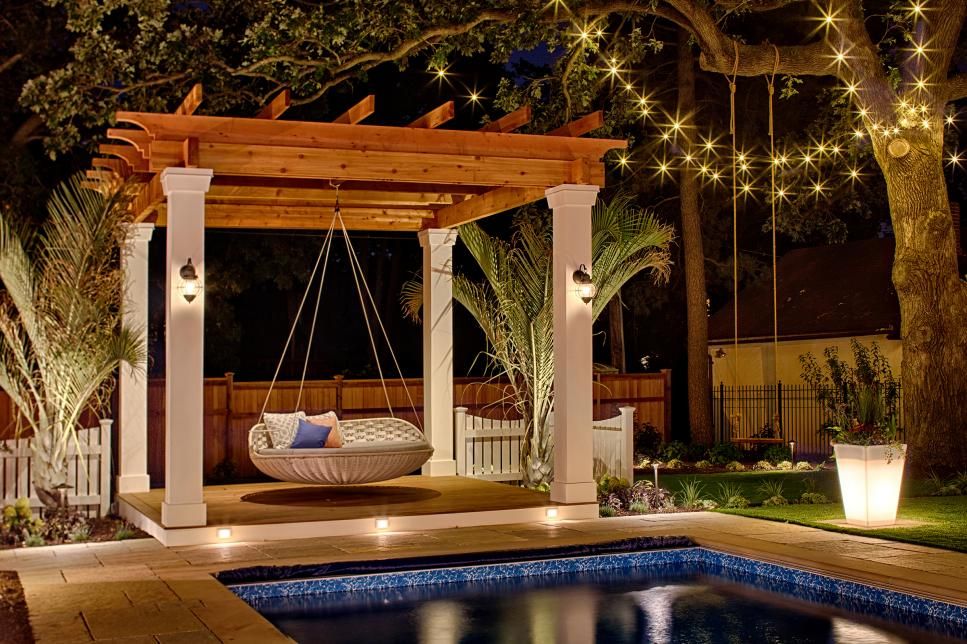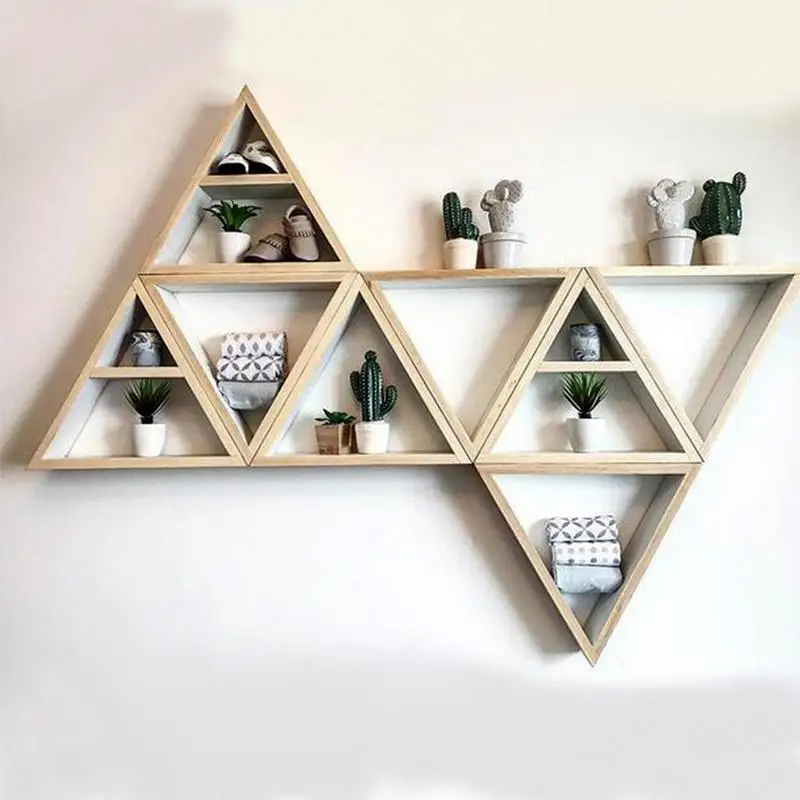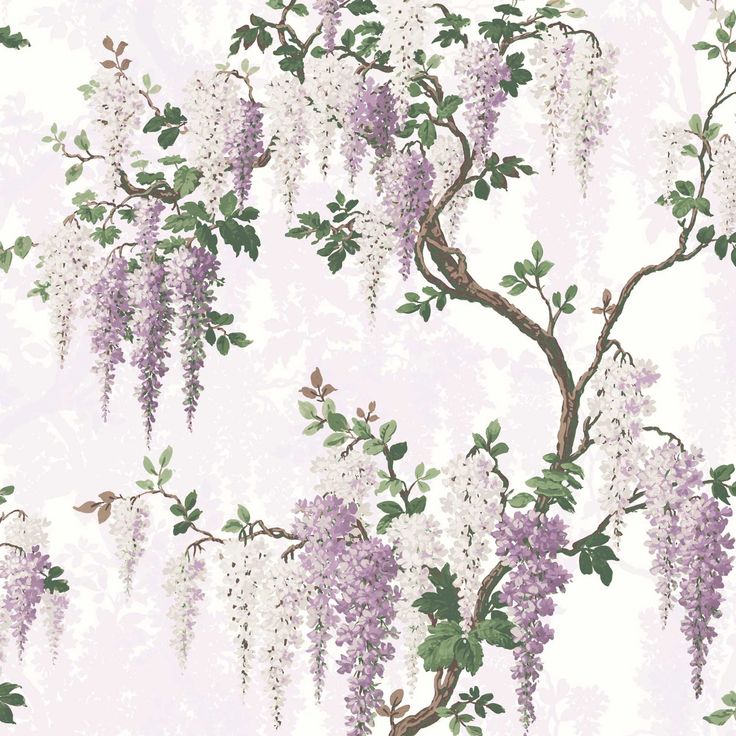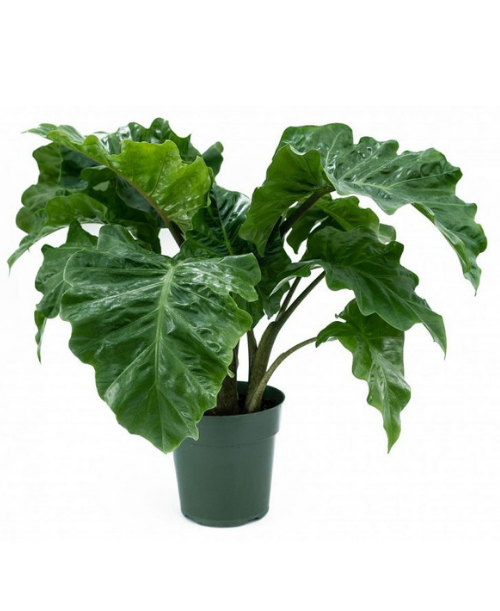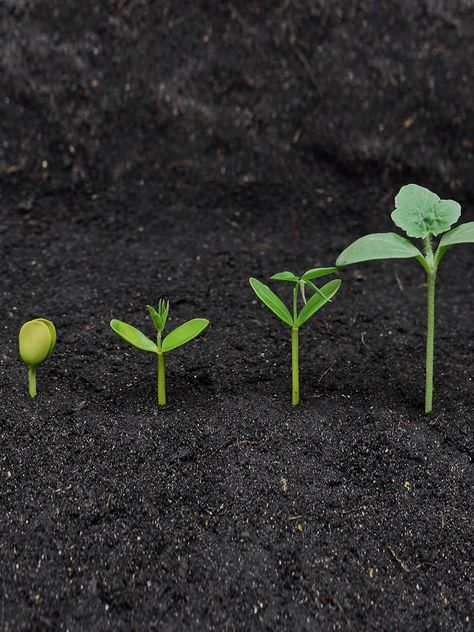Patio plantings design
22 ways to add style and interest |
(Image credit: Future / Annaick Guitteny)
When it comes to deciding on the right patio planting ideas to incorporate into your backyard, there's a lot to think about.
'We consider foliage color contrast, texture, size of the plant for extra lushness, and determine whether or not the plant will look good year round,' says Kate Anne Gross of Los Angeles landscape design firm Kate Anne Designs. 'Do we want butterflies to come to the patio? Would the homeowner like a garden scent from the patio? Does the homeowner want herbs and plants for cooking right outside their kitchen? All of these factors help us determine which plants to include in our designs.'
The patio ideas you're prioritizing will help you whittle down your options. If you're creating a space for dining, relaxing or entertaining, you'll want your patio plantings to enhance the experience, bringing color, scent and interesting forms and, as Gross suggests, perhaps attract wildlife, or even provide herbs for cooking.
And while patios are often thought of in connection with container planting, beds and borders can also provide a fabulous planting opportunity to transform this part of the yard.
Patio planting ideas
The patio is an area that’s worth paying attention to, as it makes such a big difference to the look and feel of both your house and your backyard. Calming greenery surrounding it or flowering perennials are sure to make your mood soar.
You might choose evergreen shrubs and grasses for year-round interest and color; add flowers for every season; or even opt for shade-providing trees as one of your patio cover ideas. Take inspiration from these patio planting ideas.
1. Add planters to your patio
(Image credit: Kate Anne Designs)
There's no need to limit your patio planting ideas to the area's perimeter. Especially if your patio is expansive, consider incorporating trees or tall plants in planters to help distinguish different areas, create shade from the mid-afternoon sun, and distribute luxuriant foliage to every corner of your outdoor space.
'We love using potted plants in this backyard because they add lushness and depth to the space with a contemporary and Mediterranean feel,' says Kate Anne Gross, whose firm, Kate Anne Designs , is behind the patio above.
If privacy is a concern, create a sense of seclusion with a row of potted arborvitaes.
2. Grow climbing vines by a pergola
(Image credit: Brooke Waite)
Plants are a creative and beautiful way to solve for patio cover ideas and turn a pergola into a verdant outdoor room. To achieve this, plant climbing plants at the corners.
For an all green look, Boston Ivy is a good choice, and preferred to the potentially invasive English version. To add some color, or if it better suits your climate, try Climbing Hydrangea, Clematis, Virginia Creeper (an ivy with a red tinge), or Chocolate Vine.
3. Plant a hedge wall for privacy
(Image credit: Kate Anne Designs)
A fence might be the practical way to contain your yard and create privacy around your patio, but a wall of privacy hedges serves the same purpose, with the added benefit of creating a secret garden vibe.
Landscape designer Kate Anne Gross sited this home's outdoor kitchen alongside the row of hedges to create the sense that the kitchen was its own room, and set a tone of intimacy for entertaining.
4. Contain your patio garden
(Image credit: Terrain)
If you're designing a patio and find you have limited room for a garden, try incorporating your favorite flowers with a container garden.
Choose planters of varying heights, plant a different flower in each, and group them together for the most impactful display.
5. Dress up a plain wall with a planter
(Image credit: Brooke Waite)
if your patio is of the boring, builder's spec variety, use patio planters as a way to bring life, color, and architectural detail to the space.
Above, designer Brooke Waite revamped a bare wall on her Arizona patio with a large, custom planter, and added in a variety of hardy grasses that'll stand up to the area's dry heat.
6. Use small trees to provide shade
(Image credit: Future / Mark Bolton)
Sun worshippers may not like this suggestion, but if your patio gets a lot of sun, planting small trees can give you a shady spot to escape intense rays. Look for the trees for small gardens to ensure you don't plant one that will grow too big.
Look for the trees for small gardens to ensure you don't plant one that will grow too big.
However, that’s not the only lesson to learn here: this yard is also a great example of how beautifully flower beds can coexist with pavers when you’re laying a patio.
7. Create a lush backdrop
(Image credit: Little Greene)
Complement patio planting with a lush colored backdrop and you can enhance the experience of being in nature – with extra relaxing results.
Here architectural foliage in a lighter green hue stands out against the rich green color of the wall to great effect. Make sure you follow this design’s lead with larger plants and pots to set alongside seating so they don’t get lost in the arrangement.
8. Get double use out of a raised bed
(Image credit: Future / Mark Bolton)
If the cost of laying a patio allows, consider combining raised beds with bench seating for a great dining area surrounded by plants. What could be better for an al fresco meal or glass of wine?
Plant shrubs and greenery to add height, or train climbing plants up a wall so you get pretty coverage that makes you feel like you’re in the countryside even if you live in an urban setting.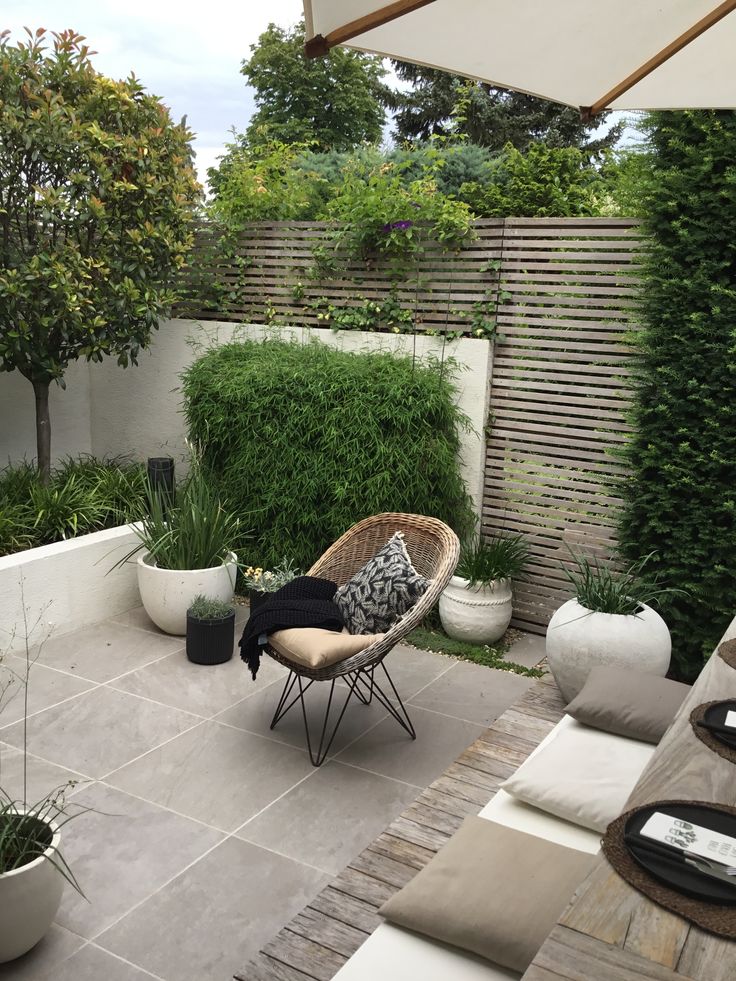
9. Grow olive trees
(Image credit: Darren Chung)
Bring Mediterranean garden ideas to your patio plantings by growing olive trees in pots there. A single tree or a pair can make a striking feature for the space.
Bear in mind that they will have to be moved off the patio if you live in a region with cold winters – which is why growing them in pots can be a winning strategy.
10. Add a flower bed center stage
(Image credit: Future / Annaick Guitteny)
Flower beds don’t have to be placed along the edge when designing a patio. Build a bed in the very center and lay pavers neatly around it to create an eye-catching architectural display – especially if you add a striking sculpture or water feature alongside highly manicured greenery.
11. Introduce topiary to a patio
(Image credit: Annaick Guitteny)
Bring the elegant shapes of topiary to a patio for a verdant backdrop to patio furniture. Many of the foliage plants used for topiary are suitable for growing in containers.
For a more formal look arrange topiary in containers symmetrically, or simply group them for a softer effect. And to maintain the shape of these evergreens, trim regularly, as well as feeding and watering to keep them healthy.
12. Make your patio attractive to bees
(Image credit: Future / Polly Eltes )
Lavender is ideal for cottage patio ideas, smells fantastic and is super appealing to bees, raising your eco credentials in one easy move. Lavender grows well in pots or beds and if you’re mixing it in to larger border, a rich blue will beautifully complement the purple of the lavender.
There are plenty of other plants that will attract bees, too, such as geraniums, Cosmos Apollo and Verbena rigida. Whatever blooms you choose, bear in mind that single-flowering stems are best for our flying friends.
13. Make a patio roof with planting
(Image credit: Future / David Cleveland)
If you need to create shade for a patio, opting for pergola ideas that make a framework for climbers is a sound solution.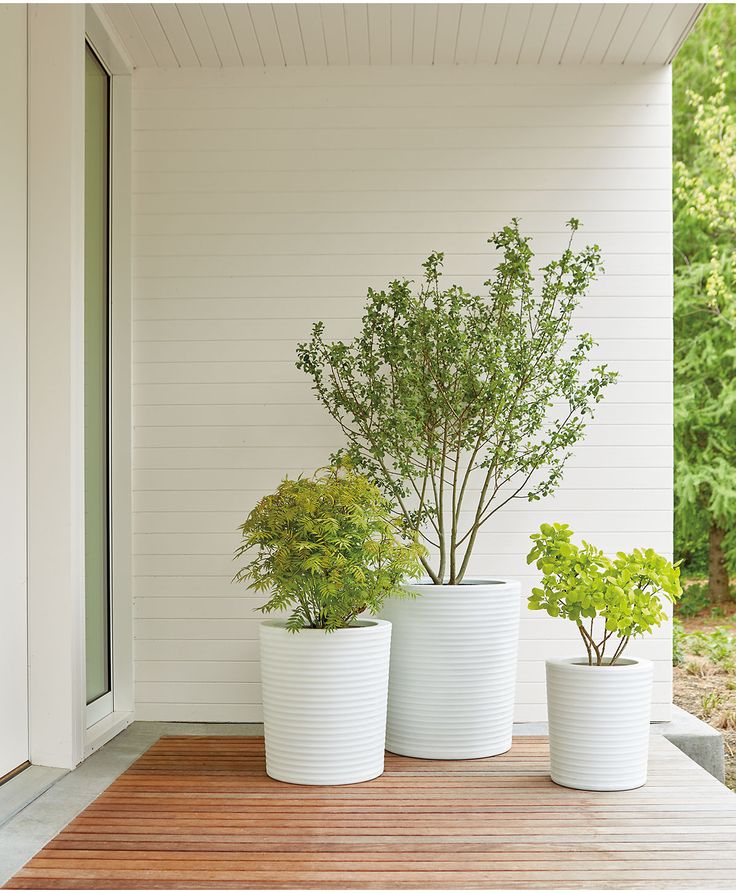 While you will need patience while the climber grows up and over to form a roof, you’ll be rewarded with a cool spot from which to enjoy the outlook. Consider this tactic if your patio is overlooked, too, as it will make the space private.
While you will need patience while the climber grows up and over to form a roof, you’ll be rewarded with a cool spot from which to enjoy the outlook. Consider this tactic if your patio is overlooked, too, as it will make the space private.
14. Mark your territory
(Image credit: Future / Mark Luscombe-Whyte)
With a view like this, one could argue that you need little else to add to it. But patio planting ideas are always worthwhile.
Here, greenery softens the hard lines of the roof, while a dense row of planter pots runs along the glass wall, making the see-through patio perimeter clearer (so you’re less likely to walk into it). The foliage also provides a little extra screening and privacy without distracting from the beautiful vista.
15. Continue a color scheme
(Image credit: Andy Stedman Design)
Link a patio to the rest of the yard by repeating the garden color schemes there.
In this yard white blooms with accents of pink border the walkway and extend to the patio, but it’s easy to get the same effect by using hues from the rest of the yard in pots and containers on the patio.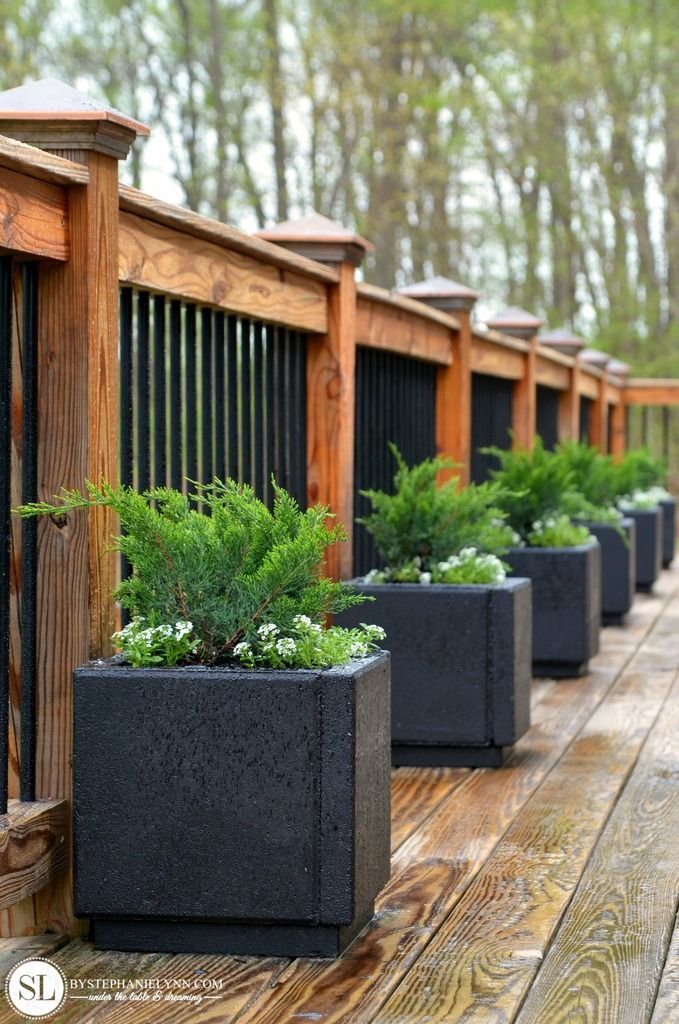
16. Surround yourself with greenery
(Image credit: Future)
There’s no paving in this scheme, so technically it’s not a patio, but the backyard could easily have one and look just the same – so we will ignore that little detail.
Patios inspired by woodland and full of lush foliage look amazing when they have a jungle of greenery around their borders, and you can even bring that greenery through into patio furniture, as here.
If you have a city garden, lush planting is great way to give yourself the privacy you crave and build an oasis of calm around you. Layer up grasses, shrubs and small trees to get the look. Start tall and work your way to smaller coverage at the front of borders.
17. Hang your baskets
(Image credit: Future / Polly Wreford)
Hanging baskets are a traditional way of raising plants off the ground and adding interest higher up, particularly in small yards.
They are often mounted on walls, but this structure creates a fun greenhouse vibe with ferns and grasses hanging down above your head.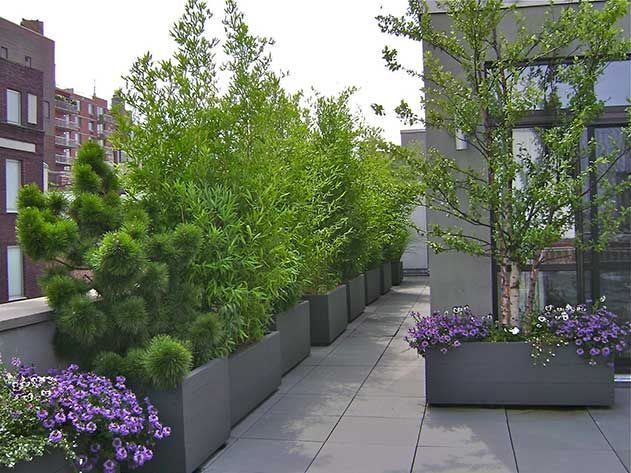 It gives a luxe feel, reminiscent of a cool city bar, and definitely has the wow factor.
It gives a luxe feel, reminiscent of a cool city bar, and definitely has the wow factor.
18. Have herbs to hand
(Image credit: Future / Spike Powell)
As patios are usually next to your home, they’re a great place for herb gardens so these ingredients are within easy reach when you need some basil for your burrata or parsley for a fish dish.
Thyme, rosemary, mint, chives and marjoram are also great growers that will be helpful when you need to add an extra flavor punch to your cooking. Another bonus is that bees love herb plants, too.
19. Live it up
(Image credit: Future / James Merrell)
Living walls (or green walls) are striking in their design, but they’re also really good for you and the air around you, filtering toxins and converting carbon dioxide into oxygen.
They’re fantastic for wildlife, too, plus looking at all that greenery is brilliant for your state of mind. Vertical garden ideas take a little planning, but the benefits definitely make a living wall worth considering.
20. Light the way
(Image credit: Charlotte Rowe Garden Design)
Patio lighting ideas may not be the first thing that springs to mind when you think of planting, but as the evenings draw in, do you really want to miss out on what your patio has to offer?
Patios take on a certain magic at night, so incorporate lighting to make yours a blissful place to dine or enjoy a drink post sun-down and admire the planting.
21. Give pots a lift
(Image credit: Future / Tim Young)
There are two patio planting ideas to take from this photo. A ladder shelf will give you lots of extra space for pots and create height on a patio without the need for big shrubbery and trees.
Also, it shows how pots don’t need to match. A mixture of colors, sizes and materials works very well together. Bold shades and unusual designs happily sit alongside more traditional terracotta and concrete planters, so have fun shopping and creating an eclectic display.
22. Let patio planting blur the boundaries
(Image credit: Future / Mark Bolton)
'Allowing plants to bleed over pavers will make a patio feel less stark, more settled, and much prettier,' says Lucy Searle, Homes & Gardens' Editor in Chief. 'You can continue this blurring of different zones by continue the patio planting into the borders beyond.'
What is a good outdoor potted plant?
‘Violas and athyriums (Lady fern) are a fantastic duo for winter and spring,’ says expert gardener Sarah Raven . ‘Both these plants are hardy and will cheer you along through to the early months of the next year. Don’t forget anenomes; they’re a great pot plant that will flower from February to May.’
In summer, roses are a wonderful choice, and many of them smell amazing. ‘David Austin’s disease-resistant roses are ideal for organic gardeners who don’t want to use chemicals,’ says Michael Marriott at David Austin Roses . ‘Among our favourites are the apricot ‘Roald Dahl’, white ‘Desdemona’, the single yellow ‘Tottering-by-Gently’ and a pink ‘Silas Marner’.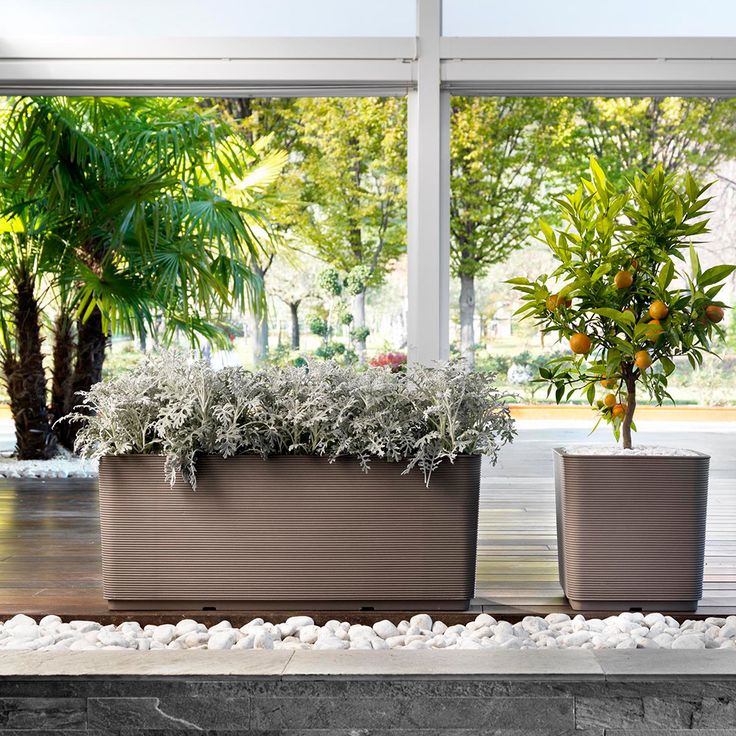 All are beautiful and fragrant, as well as being super healthy.’
All are beautiful and fragrant, as well as being super healthy.’
It’s also worth considering small potted trees. Evergreen varieties will keep your garden bright all year round and look amazing in concrete planters, making them one of the best trees for a small garden or patio.
What can I plant around my patio?
‘You can’t go wrong with tulips!’ says Sarah Raven. ‘Choose from an array of colour palettes, textures and shapes – there’s sure to be a tulip to suit everyone. This year, I particularly love the Dutch Master tulip collection – and it has a brilliant scent, too.
Other great border-softening plants include hostas, pulmonarias and santolina. Low-rise box hedges are another wonderful option for separating a space between the patio and a lawn. Or perhaps you want a more woodland look, in which case verdant grasses will keep everything lush and leafy.
Training climbing plants up a wall is a clever way to make sure that your patio is surrounded by nature, without the need for a flower bed. Giant pots can hold fairly large shrubs and small trees, too, so you may not need a bed to achieve the height you want around your patio.
Giant pots can hold fairly large shrubs and small trees, too, so you may not need a bed to achieve the height you want around your patio.
If you like a sleek style, raised flower beds look very smart, especially in concrete or painted concrete finishes.
What are the best low maintenance patio plants?
A low-maintenance garden is the dream. You want it to look good, but not necessarily take hours to care for. ‘Heucheras are hard to beat, along with foliage begonias and scented-leaf pelargoniums. Plus Plectranthus,’ says Sarah Raven. ‘Bring them all in if frost is forecast – they make great house plants, too.’
You could also try pansies, hydrangeas and Skimmia ‘Rubella’.
Bear in mind that large pots generally help to keep things more low maintenance than small pots, as they can hold more water and therefore need watering much less often. From your plants’ perspective, large pots feel more like being in the ground, too. Make sure you use well-draining soil and that there are drainage holes so the container doesn’t become waterlogged.
Ultimately, your plant choice really depends on your patio space. Is it sunny, partially sunny or shaded? Look at the labels on plants and try to make sure you pick varieties that will be content growing in your yard. It’s all very well planting a sunflower, but if you have a shady garden it will never thrive. And some plants love shade, such as hostas, so you still have plenty of options.
Rachel is senior content editor, and writes and commissions gardening content for homesandgardens.com, Homes & Gardens magazine, and its sister titles Period Living Magazine and Country Homes & Interiors. She has written for lifestyle magazines for many years, with a particular focus on gardening, historic houses and arts and crafts, but started out her journalism career in BBC radio, where she enjoyed reporting on and writing programme scripts for all manner of stories. Rachel then moved into regional lifestyle magazines, where the topics she wrote about, and people she interviewed, were as varied and eclectic as they were on radio.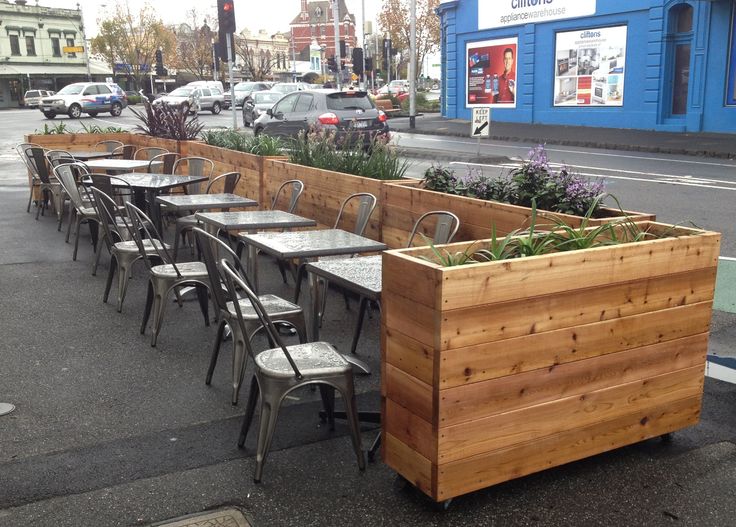 Always harboring a passion for homes and gardens, she jumped at the opportunity to work on The English Home and The English Garden magazines for a number of years, before joining the Period Living team, then the wider Homes & Gardens team, specializing in gardens.
Always harboring a passion for homes and gardens, she jumped at the opportunity to work on The English Home and The English Garden magazines for a number of years, before joining the Period Living team, then the wider Homes & Gardens team, specializing in gardens.
44 Backyard Landscaping Ideas to Inspire You
By
Peg Aloi
Peg Aloi
Peg Aloi is a professional gardener covering plants in various contexts, from recipes to heirloom orchard fruits. Her area of interest is the folklore of plants and herbs. She's worked as a garden designer for public housing, individual homes, and businesses, and gives workshops on various gardening topics.
Learn more about The Spruce's Editorial Process
Updated on 12/22/22
Reviewed by
Kathleen Miller
Reviewed by Kathleen Miller
Kathleen Miller is a highly-regarded Master Gardener and Horticulturist who shares her knowledge of sustainable living, organic gardening, farming, and landscape design.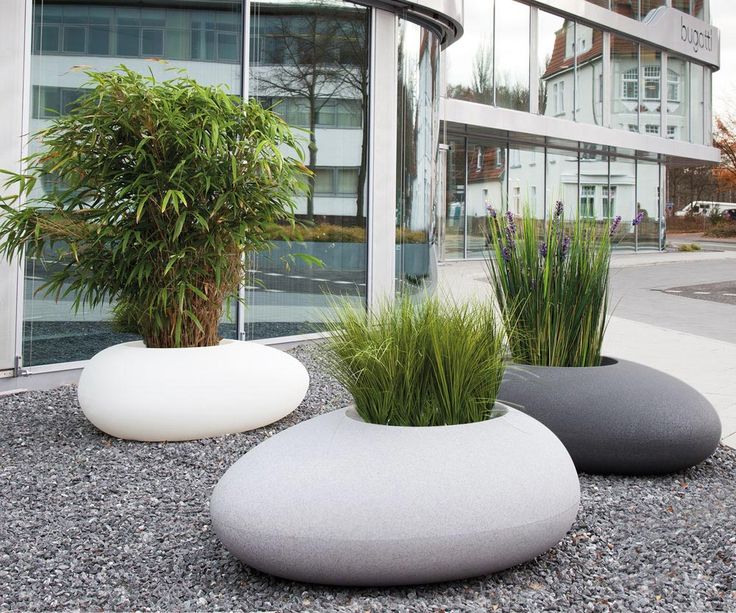 She founded Gaia's Farm and Gardens, a working sustainable permaculture farm, and writes for Gaia Grows, a local newspaper column. She has over 30 years of experience in gardening and sustainable farming.
She founded Gaia's Farm and Gardens, a working sustainable permaculture farm, and writes for Gaia Grows, a local newspaper column. She has over 30 years of experience in gardening and sustainable farming.
Learn more about The Spruce's Review Board
The Spruce / Christopher Lee Foto
Your backyard landscaping should be an extension of what's going on inside your home. Often, regardless of your indoor style, your backyard ends up looking more colorful, casual, and fun. The possibilities are only limited by the terrain, your design skills, and your do-it-yourself landscaping know-how.
Get Inspired by These Backyard Landscaping Ideas
You can always hire a landscape designer or architect to help your outdoor space realize its potential. A skilled professional can guide you through the process of figuring out a style, deciding who will be using the yard, creating zones of activity, choosing materials and plants, and recommending builders and contractors for everything from swimming pools to outdoor structures to installing irrigation.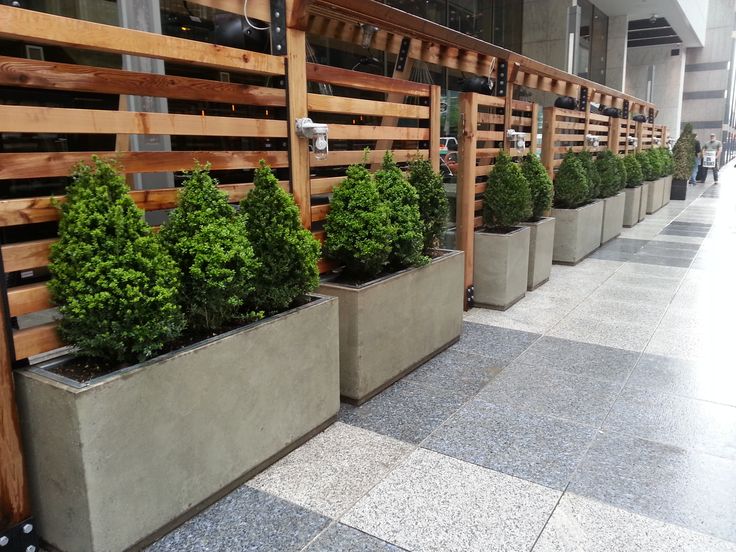
Explore 44 ideas that show you how to transform a backyard into your favorite space.
The Best Landscape Design Software
-
01 of 44
Privacy and Comfort
@ann.living / Instagram
This cozy yet spacious seating area has plenty of privacy thanks to privacy fencing and some well-placed perennial grasses that also help absorb noise. The sturdy practical table and benches provide a casual dining space, and the seating area with couch is a perfect place for an afternoon nap or evening gathering.
-
02 of 44
No Patio, No Problem
@s.u.s.a.p. / Instagram
There's no need to go to the trouble of installing a patio or other flooring.
 In fair weather, with a level lawn area, just arrange some comfy chairs (wicker with cushions give this a romantic, cozy feel), add some ambient lighting, some large candle holders, and you have a perfectly lovely seating area with impromptu charm. There's plenty of waterproof wicker options, and if rain threatens, just store the cushions and blankets indoors.
In fair weather, with a level lawn area, just arrange some comfy chairs (wicker with cushions give this a romantic, cozy feel), add some ambient lighting, some large candle holders, and you have a perfectly lovely seating area with impromptu charm. There's plenty of waterproof wicker options, and if rain threatens, just store the cushions and blankets indoors. -
03 of 44
Easy Landscaping
@ann.living / Instagram
Landscaping need not be complicated or fussy. This simple design allows an interesting border to the lawn area with simple wooden posts laid in as borders. The gray fencing, gravel, lighting fixtures and planters accent the gray tones in the tree bark, and easy plants like clumping grasses and evergreen shrubs provide interest all season.
-
04 of 44
Retaining Walls Around Patios
KG Designs
If your yard has steep levels or hills you may want to consider a retaining wall. This one has two levels around the seating area, with the lower one providing a space for seasonal plantings and a built in fireplace.
 The look comes together with a dramatic round metal pergola that supports the beautiful white wisteria vine (a plant that needs a strong structure away from the house, as its growth can become invasive over time). This pergola adds an airy, open feel to the solid retaining wall, balancing the angular walls with circular lines.
The look comes together with a dramatic round metal pergola that supports the beautiful white wisteria vine (a plant that needs a strong structure away from the house, as its growth can become invasive over time). This pergola adds an airy, open feel to the solid retaining wall, balancing the angular walls with circular lines. The Best Pergola Kits to Elevate Your Backyard Experience
-
05 of 44
Paths for Strolling
KG Designs
This concrete path allows plenty of room for walking or placing a chair to linger over the nearby vista. Planting perennials that bloom from spring through autumn makes this walkway a welcoming destination through three seasons.
-
06 of 44
Cafe Society
@s.u.s.a.p. / Instagram
So much can be done with a few well-chosen furnishings. This charming alcove is the perfect spot for breakfast or afternoon tea. The all-weather rug transforms the stone patio beneath it, creating the feel of a small outdoor room, and the filigree metal table and chairs are accented by other metal decor and various objects (clay pots, baskets) made of natural materials in an attractive neutral palette, which complements the unpainted wooden fence.
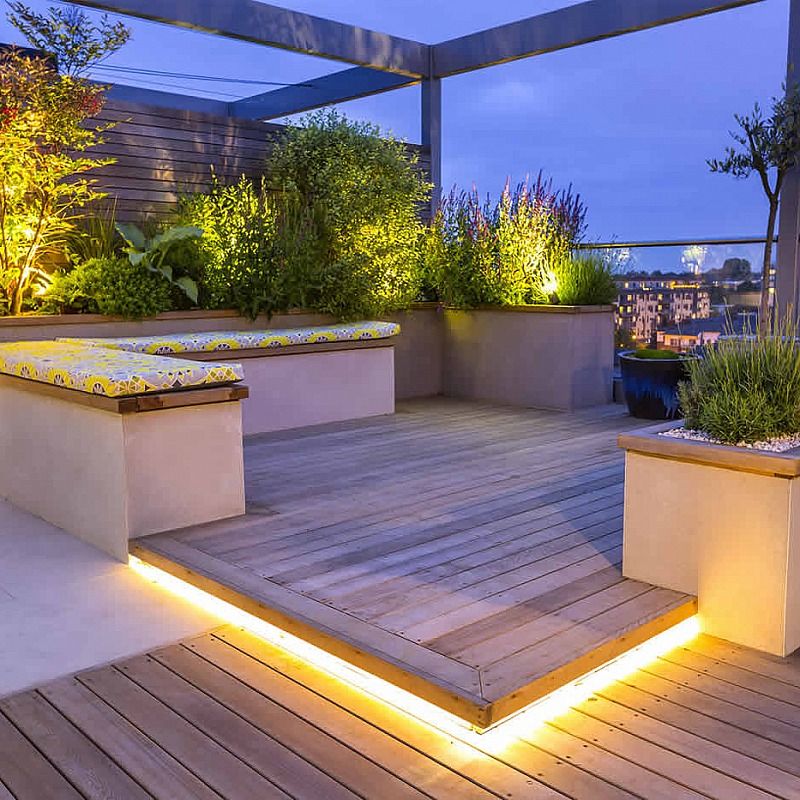 The eclectic look is whimsical yet classy.
The eclectic look is whimsical yet classy. -
07 of 44
Defining Space with Structure
Finding Lovely
With a large backyard space, structural elements are key to defining the space and giving it a shape. This yard is flanked by mature trees on its edge, and so a variety of smaller levels and contrasting shapes creates a pleasing and functional design. The garden shed with fenced in area is the focal point (and the fence is useful for wandering toddlers or pets when you're working!). The flagstone path provides graceful curves and the white stone carries on the color theme of the white fence posts and white painted trim on the shed. Finally, the curved shapes of the flower beds also define the walkway's connection to the larger property.
-
08 of 44
Garden Theme
@sunnygardentime / Instagram
Sometimes you can tell where a gardener lives! This backyard is all about celebrating gardening, with many potted plants, vines with colorful flowers growing over fences and sheds, and comfy green chairs strategically placed to rest and enjoy the view of your accomplishments after a busy morning of gardening.
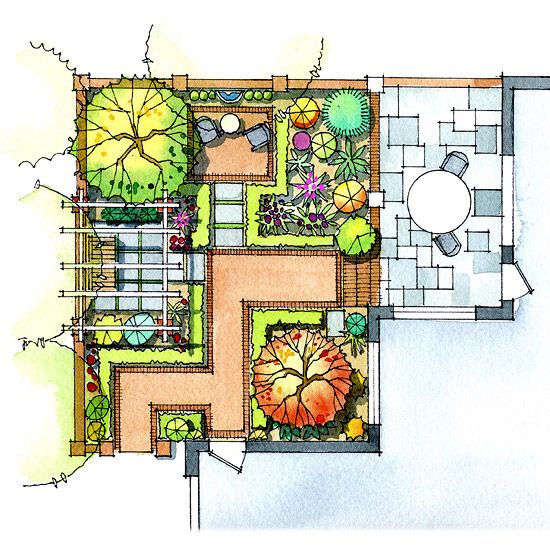
-
09 of 44
Open Air Fencing
Finding Lovely
Fences can be necessary and useful structures, but they need not always be opaque or thick for privacy. This open air fence allows plenty of sight lines throughout the garden, including views of the raised beds through the fence. The curved arbor over the gate could hold climbing roses or other vines. The strong structure of the fence, incorporated with the flagstone path, solidifies the location as a central focal point by the shed, and yet the whole area looks airy and inviting.
-
10 of 44
Pavers: Go Big!
Design by Mindy Gayer / Photo by Vanessa Lentine
Installing a patio with pavers can be a lot of work and requires decisions about preparing the space, leveling, gravel or sand, etc. These large pavers simplify the logistics a bit, and the ground cover growing between them softens the look and breaks up the large expanses of white in this design. There are lots of options for ground cover too, including grasses, creeping sedum, and creeping thyme.
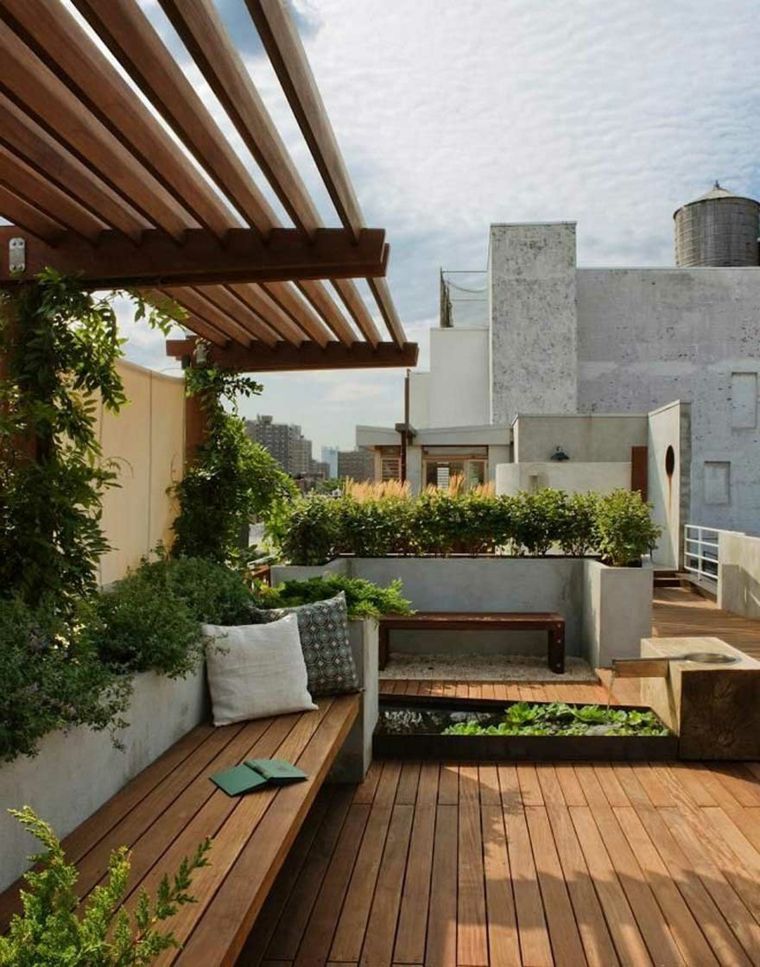
-
11 of 44
Sunken Patio
@ladylandscape / Instagram
This seating area centers around a fire dish but the round structure could as easily be a table or water feature. The real star here is the sturdy rock wall surround built of natural granite blocks, and stairs leading down to the flagstone patio, creating a sunken room effect, with plenty of lush plantings at ground and wall level to add a dose of nature and privacy.
-
12 of 44
Easy Desert Borders
@beartrapgarden / Instagram
This desert backyard is a series of garden beds and walkways. Gravel is used for a tidy, attractive look and moisture retention in times of drought. The gravel works on the walkway and in beds as an alternative to wood mulches. If the ground covers spill over the edge of the border into the path, hey, the more the merrier! The native plantings and many succulents provide a lush, colorful yet easy-going approach to having a large-scale yet simple garden plan.
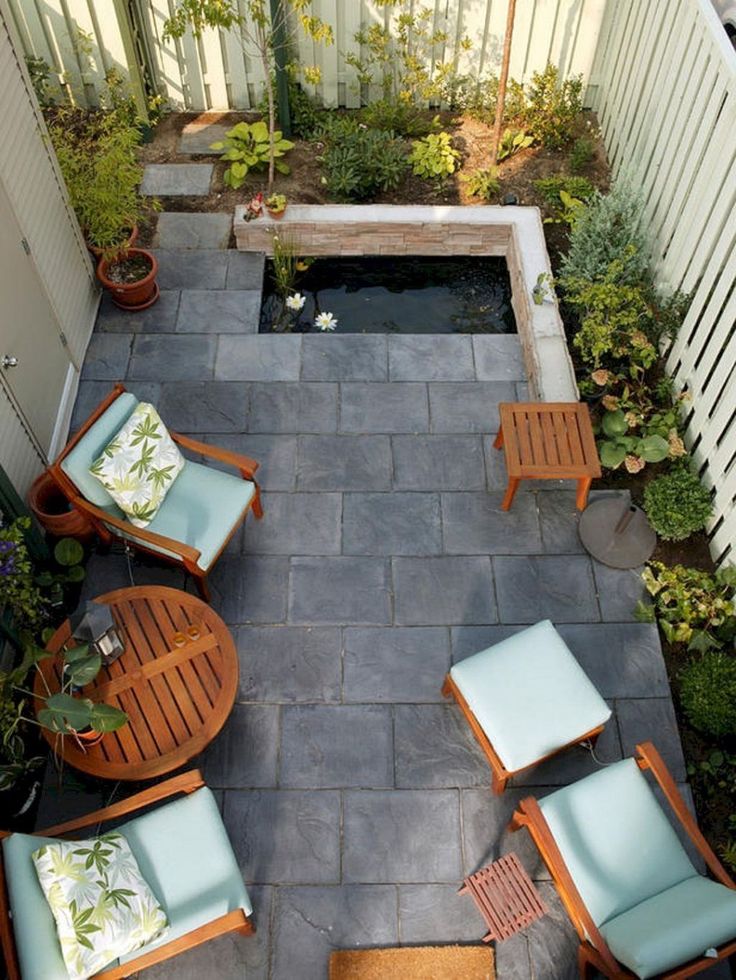
-
13 of 44
Stone Steps Lead the Way
@falkner_gardens / Instagram / Photograph by Jean Allsop /Birmingham Home & Garden (cover)
The stone stairs and walls make a dramatic entry point for the sprawling lawn and a shady seating destination beneath mature trees. (This furry friend agrees, a shady spot with some cool grass on a hot day is a welcome treat!) The large stone planters are naturally aged by moss and weather, and the abundant flowers include plenty of low maintenance hosta. The large pavers are an easy way to create a patio or walkway below the raised level and leaving some grass in between creates a casual yet intentional look.
-
14 of 44
Sustainable Design
@beartrapgarden / Instagram
Nearly every design element in this beautiful off-grid desert property is intended to be sustainable and environmentally friendly. From the native plants to the moisture-retaining gravel to the rain barrels and clever use of found objects, this appealing landscape design shows respect for the planet and a resourceful sensibility.
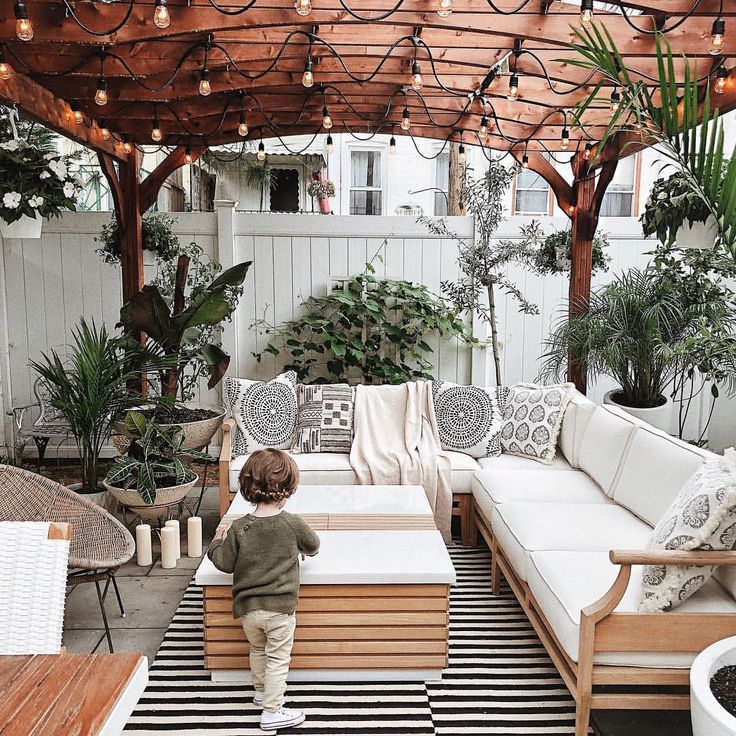
-
15 of 44
Cool Pool
@ladylandscape / Instagram
Pools are great for cooling down in hot weather, but what about cooling down when you're not in the water? A shady pavilion and terraced gardens alongside the stairs make this pool feature a comfortable and beautiful place to beat the heat. The cool-warm color palette of perennials is eye-catching and invokes both sun and water.
-
16 of 44
Lawn as Patio
Marie Flanigan Interiors
This modern and minimal design features a level lawn area the same shape as the pool, flanked by a simple bed with young birch trees. The simple lines are accented by the clean lines of the furniture chosen. The limited palette of white and brown with touches of deep green is anchored by the perennial beds with low-growing shrubs.
-
17 of 44
Fireside Chats
Design by Mindy Gayer / Photo by Lane Dittoe
For homeowners who like to entertain, having more than one outdoor area for socializing can be a great way to maximize space.
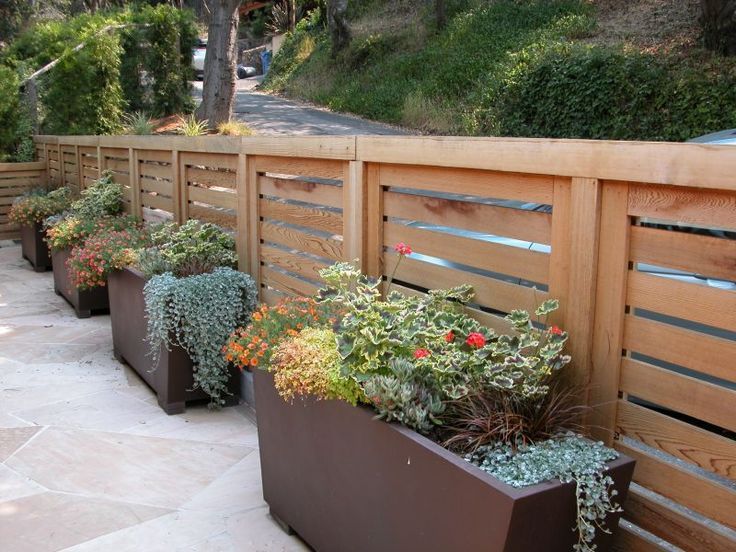 This design emphasizes seating areas over garden beds or plantings, with multiple levels and wide concrete stairs tying them all together. The sleek design of all three areas is minimal yet comfortable, with Adirondack chairs around the firepit area and comfortable seating on the lower patio, and a slightly more formal dining area on the upper level.
This design emphasizes seating areas over garden beds or plantings, with multiple levels and wide concrete stairs tying them all together. The sleek design of all three areas is minimal yet comfortable, with Adirondack chairs around the firepit area and comfortable seating on the lower patio, and a slightly more formal dining area on the upper level. The 8 Best Fire Pits of 2023 to Warm Up To
-
18 of 44
Pergolas and Arbors
@ladylandscape / Instagram
The installation of a pergola or arbor can create an attractive and functional focal point for your garden. They can frame an entry way to a seating area or other destination, and also add shade to a sunny spot. This one has a trumpet vine, a beautiful but somewhat invasive flower that can be trained to behave itself if it has a strong structure to climb on. The cozy seating area on the wooden deck is surrounded by easy care hedges and perennials, and the large pavers offer some flexibility when designing walkways.
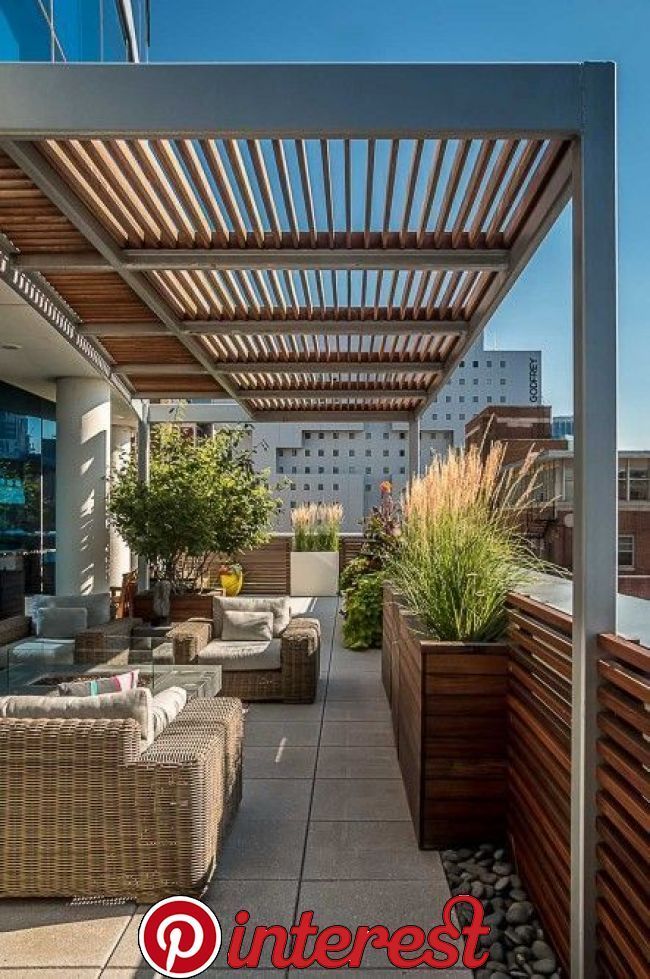
-
19 of 44
Defining Space with Containers
@beartrapgarden / Instagram
Using containers is an easy way to create height and depth of space throughout your garden areas without too much effort. This desert garden has a variety of succulents and native plants in a variety of shapes, from creeping and curvy to tall and spiky, and the containers can be moved around at will to change the look. Graceful wire fence pieces create an open air look and protect the beds from wandering pets.
-
20 of 44
Fire Dish Vista
@ladylandscape / Instagram
A wood-burning metal fire dish is a simple solution if you don't want to fuss with propane, gas or installing a fire pit. Plus, a fire feature creates the basis for an instant seating area! The open air feeling here allows a wide view of the gorgeous backdrops of mature trees and forest in the distance, and enjoying sunsets as day turns to night. The black and white Adirondack chairs look sharp against the gray flagstone patio, and the perennial tufts of grass help define the space.
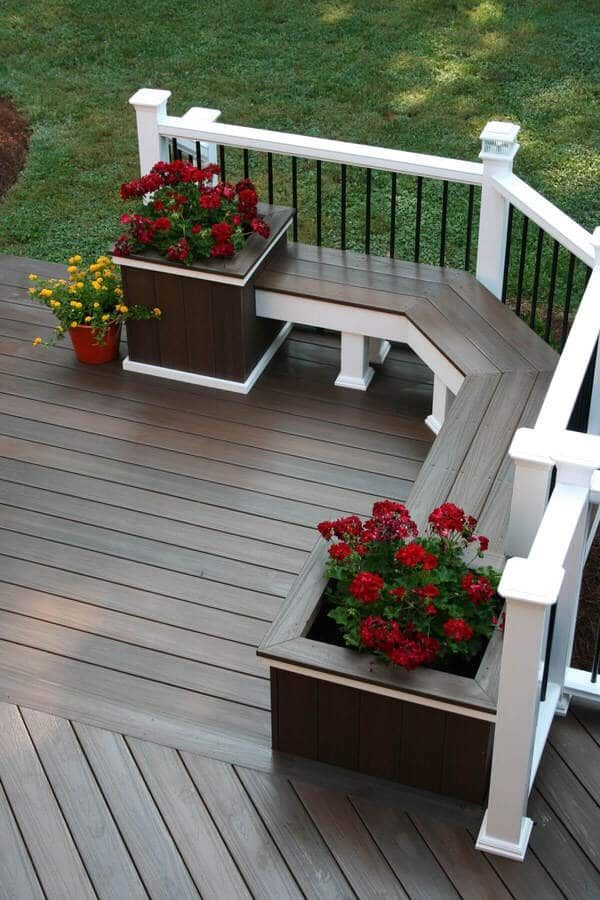
-
21 of 44
Outdoor Open Air "Room"
Design by Kendall Wilkinson Design / Photo by Paul Dyer
The willow structure creating the roof lets sunlight through but also creates abundant shade over this open-air patio room. This is essentially a pavilion with permeable roof over a deck that creates dramatic play of light and shadow and provides a cozy seating area in sunny weather. Using waterproof furniture and cushions protects in case some rain gets through.
The 12 Best Places to Buy Outdoor Patio Furniture of 2023
-
22 of 44
Curving Beds
@thepsychgarden / Instagram
A large backyard full of perennial beds just beckons meandering walks, and placing benches or other seating areas provides small destination points throughout. Mature treed provide dappled shade yet there's plenty of sun for flowers. The curved edges of these beds (precisely what English gardeners would call "herbaceous borders") have natural stone which adds to the woodland appeal of this year round garden landscape.
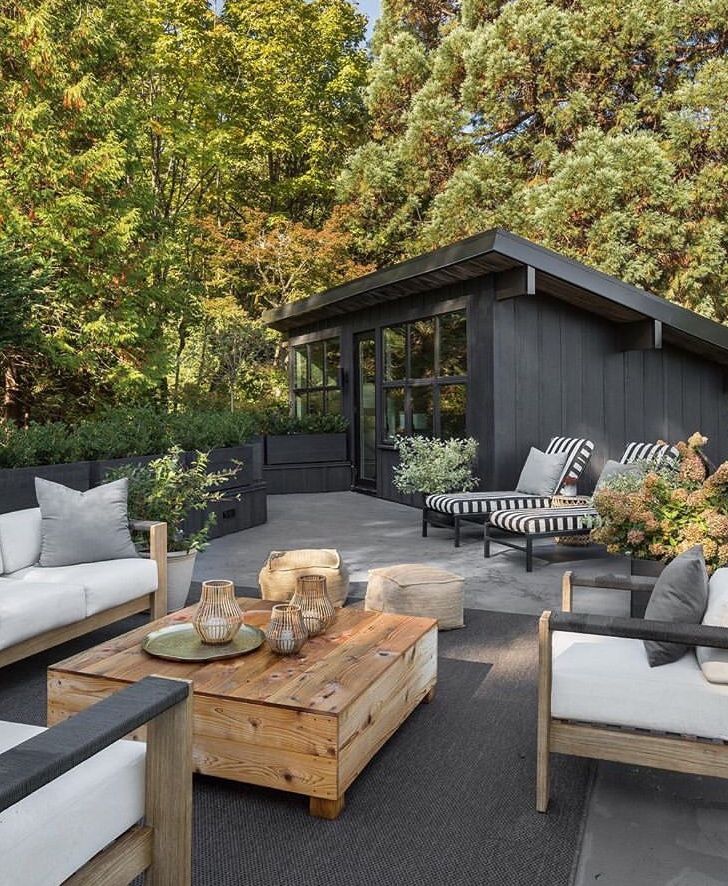
-
23 of 44
Birdhouses
Becca Interiors
Bird lovers wouldn't be without at least one birdfeeder in their backyard. These are best placed near shrubs or small trees as many birds (cardinals, goldfinches and others) desire a bit of protective cover before they'll venture nearby. This classic wooden birdhouse with tin roof has a vintage look perfect for a rambling outdoor garden. If you have multiple birdfeeding areas, be sure to consider placement in terms of seating and viewing vantage points so you can enjoy seeing the birds from indoors, or from your patio or other outdoor seating areas.
-
24 of 44
Retaining Walls and Stairs
Kate Marker Interiors
This magnificent design features a rear entry way of stone steps and retaining walls with built-in perennial beds, providing not only practical access to the rear entrance but a marvelous garden space. The rectangular shapes of the pool, patio and levels of planters alongside the steps create a pleasing perpendicular shape with long lines contrasting with the tall shape of the house.
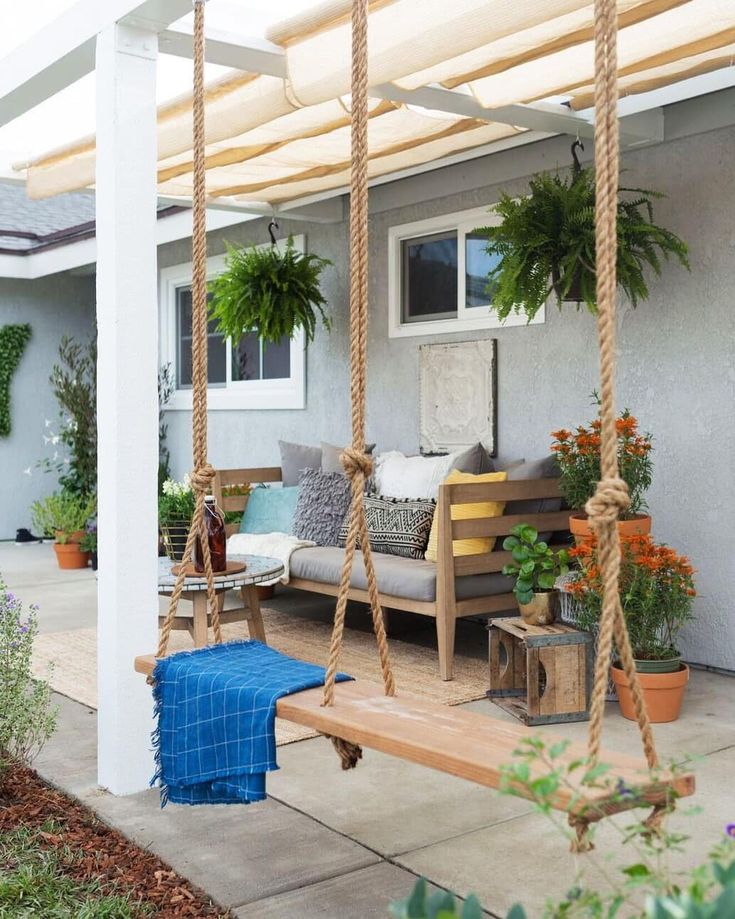 The shrubs and planters add softer curving shapes for baance.
The shrubs and planters add softer curving shapes for baance. -
25 of 44
Simple Patio Design
M Lavender Interiors
Patios can be elaborate or simple, and one of the most basic designs includes a flat floor surface, usually of flagstone pavers or bricks, or other natural material. Just add some weatherproof furniture like this simple wicker sofa and chair, and a table, and you have a cozy seating area suitable for many uses. This patio has some shrubs nearby and containers of annuals can be easily moved around to change the shape or look of the space.
-
26 of 44
Lush Patio Surroundings
@thepsychgarden / Instagram
This backyard is full of lush garden spots, from the full perennial beds and trees to the vine-covered screened porch and the enormous planters. This small seating area has European charm with its metal furniture and ornate stone planters with blooming hydrangeas, and plenty of privacy from nearby shrubs.
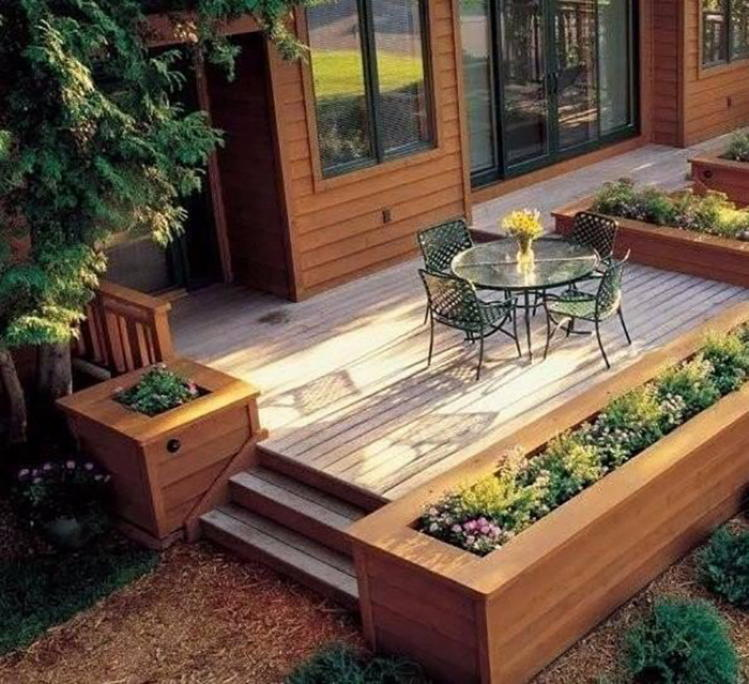 The container with the large fern can be moved to create space for drinks or coffee.
The container with the large fern can be moved to create space for drinks or coffee. -
27 of 44
Tropical Plants for Drama
Design by Calimia Home / Photo by Karla Garcia
The tropical plantings add color and drama to this southern home, with a flowering vine trained into a tree form, and large-leafed tropicals planted closely together for visual impact and a block of vibrant color.
-
28 of 44
Poolside Serenity
Design by Mindy Gayer / Photo by Lane Dittoe
Who says you can't plant perennial beds next to your pool? These low maintenance grasses and other perennials in a range of pale greens accent the mostly white palette here. They also add some organic shapes and visual textures to the straight lines of the pool, buildings and furniture. A festive large umbrella provides some shade for this poolside oasis.
-
29 of 44
California Vibe
White Sands Design/Build
This beachside bungalow has touches of Moroccan design (note the dramatic tiles in the stairs) and splashes of color from ceramic planters to enliven the white plaster walls.
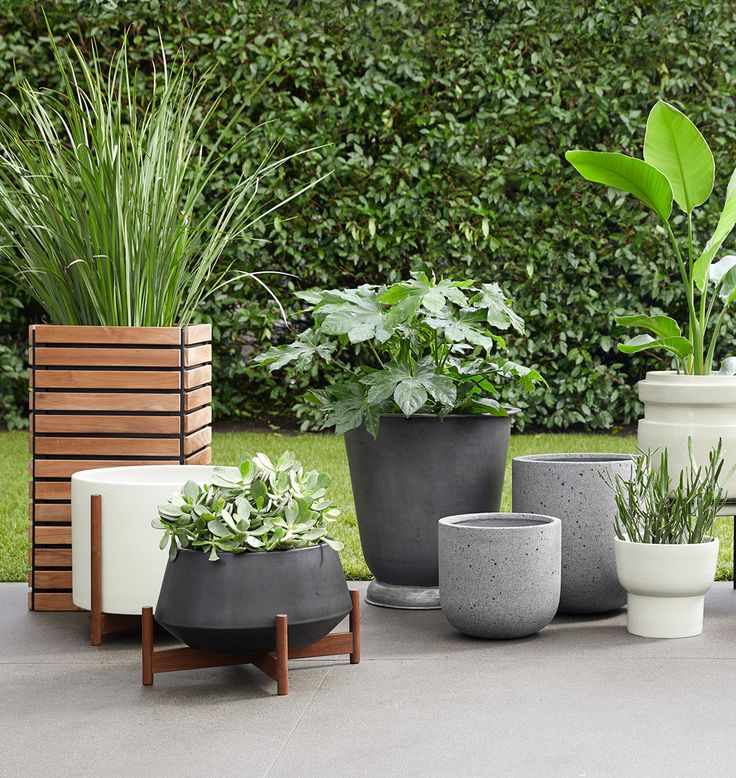 The plants are an attractive assortment of natives and tropicals suited to this southern California climate. These three dogs seem to love the spacious ease of the sandy walkway and the shady pockets created by lush perennials.
The plants are an attractive assortment of natives and tropicals suited to this southern California climate. These three dogs seem to love the spacious ease of the sandy walkway and the shady pockets created by lush perennials. -
30 of 44
Multiple Seating Options
@ladylandscape / Instagram
Having more than one seating area, even under one pavilion, is a great option if you can manage it. This gives you flexibility for entertaining, and also allows for different views to enjoy the changing colors and shapes of the garden through the season.
-
31 of 44
Seasonal Colors and Shapes
@thepsychgarden / Instagram
The gentle texture of this weeping cherry tree in spring is enhanced with multiple clay pots with spring bulbs blooming. The brick beds echo the terra cotta of the pots, adding a warm yet neutral tones against the cool color palette of greens, blues and purples.
-
32 of 44
Garden Views
@ladylandscape / Instagram
These terraced gardens with stone steps and decks for walking look over a scenic view of meadows and hills.
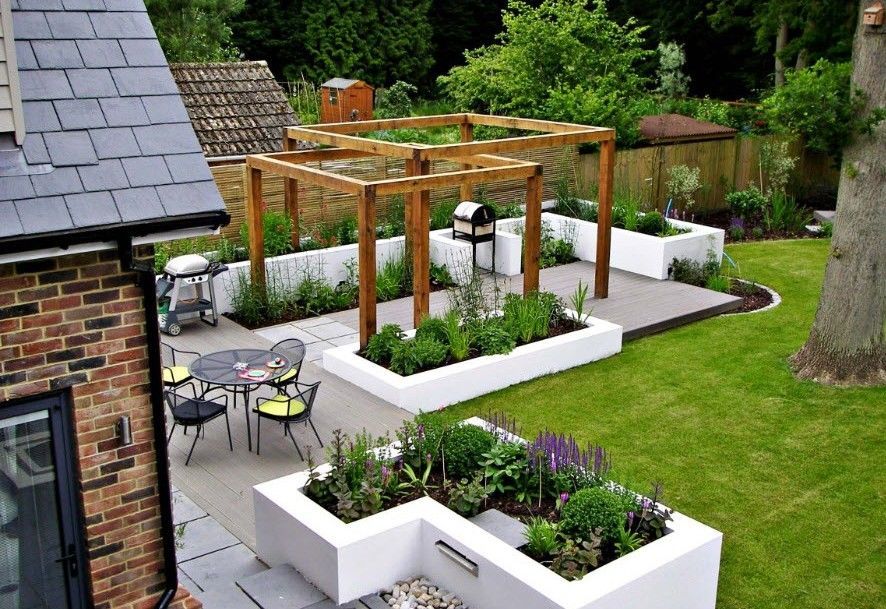 The native plantings are colorful and their bushy shapes echo the trees and grasses in the distance.
The native plantings are colorful and their bushy shapes echo the trees and grasses in the distance. -
33 of 44
Shady Arcadia
@gardenfromscratch / Instagram
The verdant shade gardens of this property may be chock full of luscious plantings including a diverse array of hostas, but still feel open and airy by this open-air iron gate that looks out over a wide meadow vista.
-
34 of 44
Luxurious Lawn
Hannah Tyler Designs
Sometimes letting your grass grow just a bit higher than normal gives it a glossy, soft look and feel. This low-key backyard design features a lovely mature tree encircled by hostas and meandering cottage-style flower beds, but tying it all together is a lush expanse of green. Don't have perfect grass? Try adding clover seed for a pollinator-friendly lawn that fills in nicely.
-
35 of 44
Gardens at Sunset
@ladylandscape / Instagram
For gardens with a sunset view, consider plantings that will complement the glorious colors of the sky, for maximum enjoyment.
 Paniculata hydrangea flowers turn rosy burnished hues as summer turns to autumn, and oakleaf hydrangeas have foliage that turns brilliant colors, Many flowering shrubs have foliage that turns colorful at some point in the season, including varieties of ninebark, amsonia, fothergilla, and spirea.
Paniculata hydrangea flowers turn rosy burnished hues as summer turns to autumn, and oakleaf hydrangeas have foliage that turns brilliant colors, Many flowering shrubs have foliage that turns colorful at some point in the season, including varieties of ninebark, amsonia, fothergilla, and spirea. -
36 of 44
Dining Al Fresco
Finding Lovely
With a level lawn and some cooling shade trees, you can set up a seasonal al fresco dining area to use as often as you wish. Weatherproof furniture options are plentiful these days. Just change up the linens and table settings, add some fresh cut flowers or other centerpiece, and you're ready to entertain outdoors without having to clean the whole house! The shade canopy allows for morning or afternoon meals; evening dinners in summer might need a bit of insect prevention in the form of citronella candles.
-
37 of 44
Curvy, Cozy and Chic
@cottageandsea / Instagram
This small seating area is delightfully stylish owing to a tasteful mix of textures and round shapes.
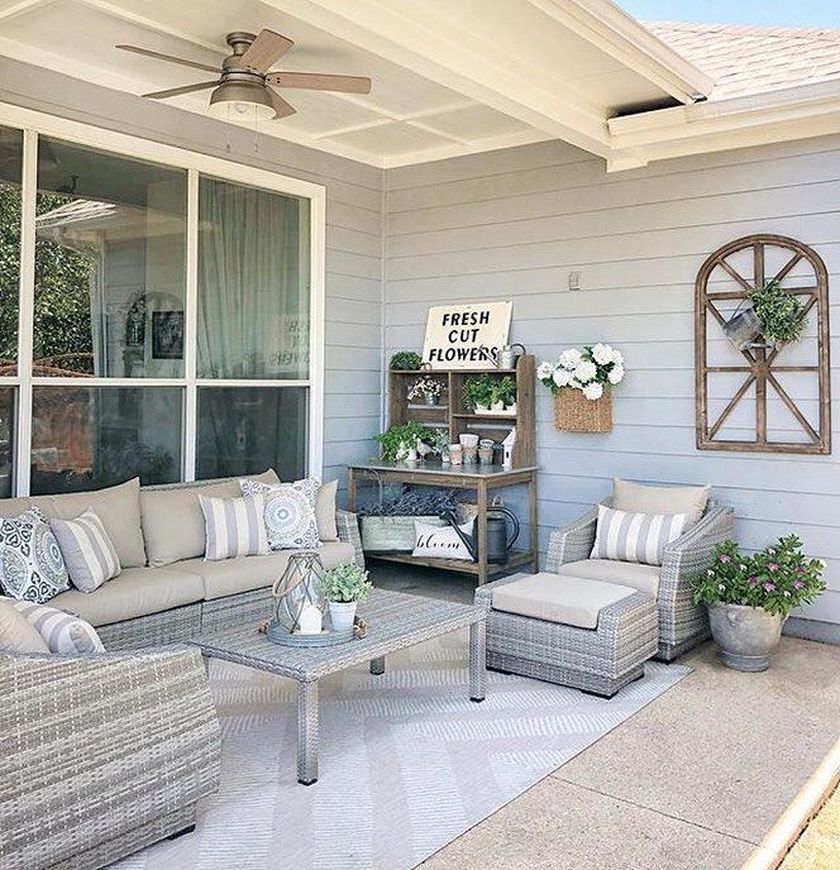 The curves are repeated in the egg swivel chair, the central water feature, the decorative woven rug, the cushion chair, and the charcoal grill/smoker.
The curves are repeated in the egg swivel chair, the central water feature, the decorative woven rug, the cushion chair, and the charcoal grill/smoker. -
38 of 44
Balancing Shapes and Textures
Design by Mindy Gayer / Photo by Vanessa Lentine
With so many options available for furniture and plants, an outdoor seating area can be low maintenance by design. This modern seating area has waterproof cushions and a clean propane stone fire dish for easy entertaining. The square lines and gray tones are nicely complemented by planters at a right angle filled with feathery textured perennials in striking colors.
-
39 of 44
Stripes and Shapes
@kirsten.diane / Instagram
The whimsical design elements here pull together beautifully, with the soft textures of the blooming lilac bush and curving shapes of the umbrella the large glass jug forming a pleasing counterpoint to the angular striped patterns of the cushions and rug.
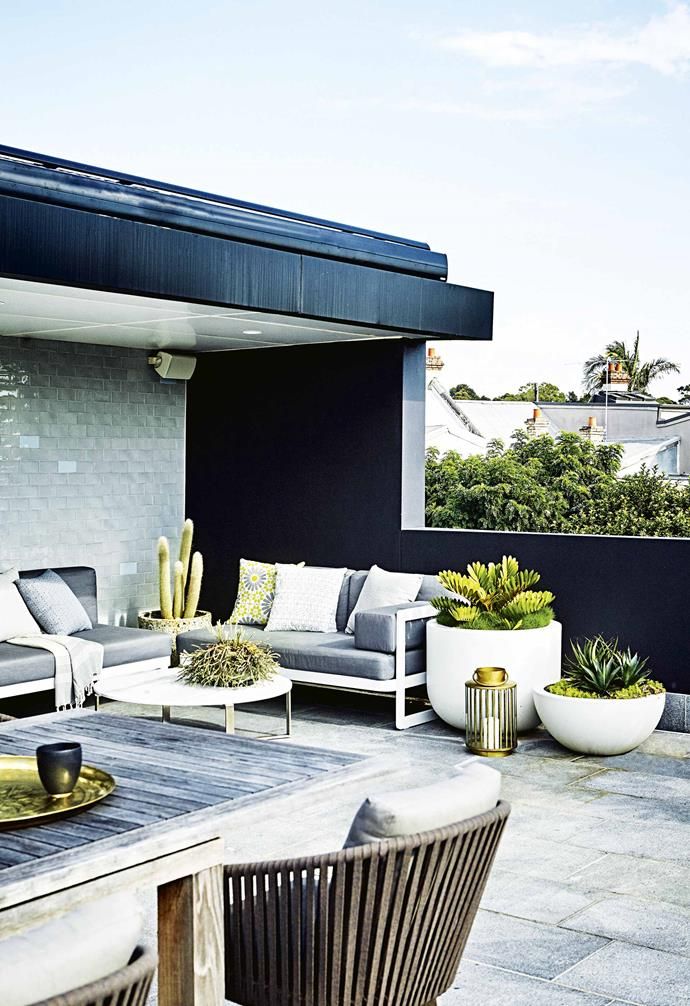
-
40 of 44
Winter Charm
@s.u.s.a.p. / Instagram
Even if you're not spending too much time sitting in your backyard space in winter, adding some seasonal decor can lift your spirits when the winds are howling. This simple Scandinavian holiday scene has winter greenery draping over a bench, birch logs, pine cones, a tree sculpture, and a chunky wooden star to create a rustic holiday tableau.
-
41 of 44
Lighting Effects
@cottageandsea / Instagram
Creative use of lighting can transform the backyard experience. This attractive wicker pendant lamp can be fitted with electric, battery powered or solar bulbs depending on your needs. It creates a nice focal point for this simple seating arrangement of wooden chairs and central table, and the light will have plenty of plants and leaves to filter through to make dramatic shadows.
-
42 of 44
DIY Decor
@luckyplot13 / Instagram
If you're handy with a paintbrush you can create a nice color scheme with used furniture, wood pallets, and other objects to be upcycled.
The pale pink works as a neutral here with the small container plantings. The willow fencing makes a perfect backdrop to hang some festive string lights, and is an easy and cheap way to cover up ugly fencing or create some instant privacy.
-
43 of 44
Winter Interest
@gardenfromscratch / Instagram
If you live in a zone where you get substantial snowfall in winter. consider plantings that will offer sculptural beauty in a snowscape. The large weeping evergreen tree looks beautiful covered in snow, and this variegated yucca is an unexpected but thrilling sight in this winter landscape. Dormant sedums and ornamental grasses often make interesting shapes in snow and can then be cut back in early spring before new growth begins.
-
44 of 44
Sensual Scenery
@s.u.s.a.p. / Instagram
This simple seating area in a small garden in Yorkshire, England is surrounded by sensual pleasures of all kinds: a scenic view of mountains, the intoxicating scent of wisteria blooms, leafy plantings, and whimsical Japanese lanterns hanging from the hedges.
The best patio plants
Ornamental plants will give your patio a cozy and attractive design.
Gorgeous vines - protection from heat, wind and unwanted glances
It is advisable to plant fast-growing plants around the perimeter of the patio, especially vines.
Clematis
This amazing plant will not leave anyone indifferent and will decorate even the most unattractive area. Among the many varieties of perennial, everyone will be able to choose the best option for themselves. nine0003
Kampsis
Ideal for busy people - absolutely maintenance-free and blooms almost all summer. It is important to create powerful supports for it that can withstand the heavy weight of shoots that grow 5-7 meters in height. Corrective pruning is required to slow down overgrowth.
Climbing rose
The queen of flowers will add a touch of charm to your patio. But every autumn it will have to be carefully removed from the support and insulated.
Chinese lemongrass
Liana will create a pleasant shade in the summer heat (its shoots grow up to 15 meters in length), and will also give tasty and healthy fruits.
Actinidia
Another vine that has not only decorative properties, but also edible fruits.
Tree pliers
When using vines for landscaping, it is important to prevent the shoots from thickening and spreading to other plants.
Diploidia
A plant with ampelous shoots up to 1.5 meters long looks great in hanging pots. It blooms with beautiful fragrant flowers all summer. nine0003
Tree-like plants - the central part of the composition
Shrubs and low trees will look beautiful in the middle of the courtyard.
Mock orange (false jasmine)
Abundantly flowering shrub that spreads a dizzying aroma throughout the garden. If you pick up several varieties with different flowering periods, then the patio will be fragrant from spring to autumn.
Garden hibiscus
Flowers of various shades please with their original beauty only for one day. But thanks to the abundance of flowers, the bush retains its decorative effect throughout the season. nine0003
Oleander
Unpretentious, blooming all season, oleander will become the central accent of the composition and fill the courtyard with a pleasant aroma. But it is worth considering that the plant is poisonous. It is better to refuse it if there are small children and pets in the house.
The "highlight" of landscape design will be trees and shrubs with a unique shape and original coloring of leaves, spectacular fruits: cherry plum, beautiful fruit, chaenomeles (Japanese quince), weeping willow. nine0003
If you want your patio to retain its decorative effect all year round, then pay attention to evergreen shrubs: junipers, arborvitae, dwarf pines.
Creating the lower tier
In the middle of the paving, cereals (especially reed grass) and herbaceous plants will look original: bulbs, ferns, lavender, lantana, stonecrop, gravel, carnation, balsams, salvia, geranium.
The center of the composition will be hosta, characterized by great diversity. Among the representatives of the genus there are miniature plants and giants, species with a variety of shapes and colors of leaves. Hostas are decorative, unpretentious, cold-resistant. nine0003
The completeness of the design will be given by tubs and pots with indoor plants exposed throughout the courtyard, hanging planters in which you can sow ampelous petunias and begonias.
Top 4 recommendations. How to design a patio
Top 4 recommendations. How to design a patio, use our expert guide to learn how to design a patio - and create a fabulous yet functional outdoor living space.
We tend to expect a lot from our gardens, so good patio design is vital. After all, they should simultaneously act as vibrant social centers equipped for dining and entertainment, and zones for quiet moments of reflection to get away from the stresses of the day. nine0003
Achieving this balance in the backyard requires careful thought. An important step in designing a patio is finding the perfect spot; a place that attracts light at the right time of day, but is conveniently located near the house or equipped enough to provide everything you need.
The intended function of the space will ultimately determine the outcome of the design.
In this article, you'll find all the tips you need to create the perfect patio: tips, inspiration and lots of patio ideas. nine0003
HOW TO DESIGN A PATIO: EXPERT TIPS FOR PATIO DESIGN. TOP 4 RECOMMENDATIONS.
Follow this step-by-step guide to learn how to style your patio like a pro.
HOW TO PLAN A PATIO LAYOUT?
The layout of the patio should be determined by how you want to use it - and, accordingly, what furniture it will be furnished with. So, if you plan on hosting guests regularly, you should consider a variety of patio furniture ideas – a dining set, a lounging set, or both – that will help you make the most of the space. You also need to consider how big the furniture needs to be - in other words, how many people you want to host on it regularly - and whether you need to include patio cover ideas like pergolas. nine0003
Next, you need to plan the negative space of the patio - the gaps and gaps between the various pieces of furniture, and between the furniture and the edges of the patio. Ideally, these negative spaces should be about 1 meter wide.
This will allow you to comfortably move around your patio without feeling cluttered or looking cluttered, and especially if your patio is raised or terraced and has no railings, means that the furniture - and those sitting on it - are unlikely to fall off it . nine0087
The easiest way to design a patio that fits your exact needs is to draw it to scale. This way you will be able to plan patio landscaping ideas from the very beginning, such as flower beds, borders and potting arrangements, and even consider space for any outdoor kitchen idea.
With rope, you can also create patio borders in the existing yard to check its dimensions again.
WHAT IS THE OPTIMAL SIZE OF A PATIO? nine0076 What is the optimal patio size.
This largely depends on the size of your backyard. Whether you're considering apartment patio ideas or have a small space to work in, you'll be limited to certain perimeters. If you have a large yard, you will have to decide if you want the patio to be a design element or a focal point.
But as a rule, the size of the patio should be planned according to how many people it can regularly receive - usually this means about 3 square meters. meters of space per person. So, if you are a family of five, then the patio area will be 12 square meters. meters. nine0003
Muslin patio decoration with decking, patterned blue rug, wicker sofa and coffee table.
Create zones when decorating your patio.CREATE ZONES WITH YOUR PATIO DECORATION.
Just like indoors, it is important to plan the different areas of your patio at the very beginning of its design. If, for example, an outdoor dining area is best positioned next to the kitchen doors and includes shade in the design, then it's time to do it right now. nine0003
Similarly, you might want to create a seating area surrounded by pots or scented flower bed ideas, such as fragrant herb beds or fragrant vines.
Zoning a patio isn't that important if you want to use it flexibly - but if you're designing a patio that is fixed, perhaps because it's a series of small patios on different levels, you need to think carefully about zoning it from the start.
Garden patio design in an elegant modern scheme with decking and overlapping stone patio. nine0003
WHERE TO LOCATE THE PATIO.
Where to place the patio.This choice is influenced by three factors: how you want to use the patio; where it will look best in the overall design of your garden; and whether it will be viewed or not.
How you want to use your patio: if it's just for dining, a shady spot is fine, but if you're a sun lover, a sunny spot is best. Conversely, if your entire backyard is sunny and you want to create a dining area in a specific part of it, you can use clever shade garden ideas to make the space perfect. nine0003
Where it would look best: Traditionally, for convenience, a patio is located just outside the door to the backyard - but there is no reason, especially in a large space, not to have several. And of course, if the only sunny spot is at the end of the garden and the patio can be beautifully planted to create a great view of it from home, this might be the best option.
Patio Location for Privacy: A patio should be private, but that doesn't mean you should position it for privacy in your backyard as it is - there are plenty of garden privacy ideas you can use to create a new private space. nine0003
How to create a patio in a formal country cottage garden with gravel, stone patio and large plant pots.
SELECTION OF PATIO MATERIALS.
Selection of patio materials.While we always advise keeping an eye on gardening trends, it's important that your patio design reflects the style of your interior and the materials it's built from.
For example, modern homes will benefit from modern materials and design techniques, while more traditional homes will require looking for period-style materials or authentic materials. nine0003
The last few years have seen a big shift in the materials and finishes used in patio design, with factors such as maintenance and patio cost to be taken into account when choosing a material.
Also read the article A house with a pool is everyone's dream.
Porcelain is becoming increasingly popular, primarily due to its low maintenance and wide variety of colors and finishes. Porcelain can provide a clean, more modern look. To keep the design from feeling cold or hard, I use landscaping to soften it up. nine0003
Here are some tips for choosing your patio material:
1. BE AWARE OF THE TERRAIN.
Be aware of the terrain. Designing a patio in keeping with the surrounding architecture, demonstrated with an industrial style dark herringbone brick floor.
In my garden design studio, we usually choose a paving material that directly reflects either the architectural features of the house or interior design elements. We also like to create patterns in paving, so we often choose smaller paving stones, mesh or bricks to use in combination with the larger format. The more interest and pattern we can create in the paving, the more visually pleasing the overall scheme is. nine0003
2. CHOOSE HARDWOOD FOR PATIO WITH DECKING.
Choose solid patio wood.Patio design with layered decking against a blue wall, blue and yellow accessories and a small tree.
If you are considering flooring ideas for your patio. It's worth spending a little more on sustainably sourced hardwood flooring as it produces the best and most durable results.
We usually choose hidden milled connections; this means that the boards are joined side by side, thus avoiding the need for screws embedded in the surface. nine0003
3. CHOOSE A BRICK FOR CHARACTER AND STYLE.
Choose a brick for style character.Round brick terrace in wooded garden with steps and stone bridge.
Considering cottage patio ideas or historic home patio ideas? Try a brick.
4. CHOOSE A GENUINE LOCAL STONE.
Choose a real stone of local origin. Stone quarried and delivered locally is definitely more environmentally friendly than, for example, granite quarried and delivered from China. Going to a local stone yard or talking to your garden designer about it early in the process can help you find local stone that will also complement your garden landscape as a whole, like the rustic patio paving used in this small garden design. Pockets of plants along the edges of the patio or as a separation between different areas will soften your design . Take inspiration from existing backyard ideas and choose a patio planting pattern that reflects successful plantings in the rest of your backyard. However, for a stylish look, highlight a few plants, such as sample trees in containers. Planting plants for privacy and fragrance are also important elements when decorating a patio. When planning your patio landscaping, consider the characteristics of the plants to optimize the space. Interesting Coastal Kitchen Ideas - 12 Ways to Inspire Seaside Style Use tall plants to frame the area and shield the back of the flower beds, while stunted or climbing varieties that overhang the hard edges of the paving soften the separation between them. Use a plant palette that provides form, structure, color, scents and sounds, as well as tactile and edible elements. It is important to provide stimulation to all senses throughout the year to keep your patio space inspiring and inviting. nine0003 Raised beds and attractive garden railing ideas are important finishing touches to your patio design that need to be planned from the start. Walls built from stone or cheaper materials will give your patio a more stylish look, especially if they echo the exterior materials of your home. However, you can also complete your patio design with wood beds and borders, which can be cheaper and faster to build. nine0003 Embrace pergola ideas to add height, structure and atmosphere to your patio space and create partial shade rather than a full block of sun. Water features are in high demand, mainly as a focal point, but also because the sound of the water or the tranquility of a fixed mirror pool transform the garden into a serene space. Water objects can be functional and versatile; they can serve as habitats for wildlife or be used in innovative ways. nine0003
INCLUDE LANDING IN YOUR PATIO DESIGN.
Incorporate planting into your patio design.
INCLUDING HARD LANDSCAPE IN PATIO DESIGN.
Incorporating hard landscaping into patio design. HOW TO DESIGN A PATIO FOR SHELTER.
How to design a patio for shelter. Pergolas are also perfect for patio lighting ideas, such as pendant lights or fragrant rock gardens that will give your patio a sense of secluded serenity.
DESIGN YOUR PATIO WITH WATER FEATURES. nine0076 Include water features in your patio design.
HOW TO ESTIMATE A PATIO DESIGN.
How to make an estimate for the design of the patio. nine0002
There is also such an important issue as money.
Landscaping is the most expensive part of patio design - and while labor costs may be fixed, you can reduce or increase costs with a variety of materials and design elements such as railings, pergolas and walls.
There is a huge selection of natural stone and artificial paving at different prices.



